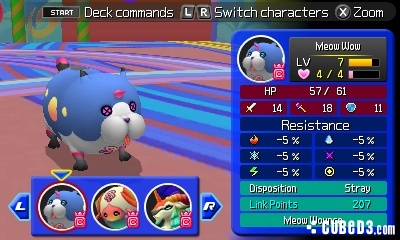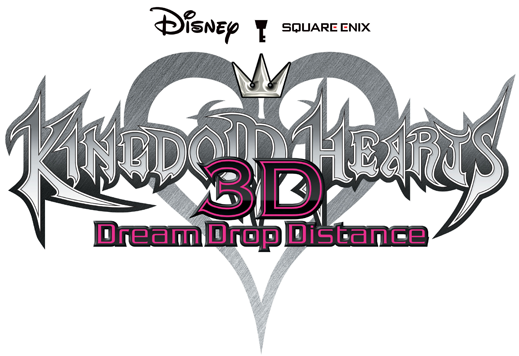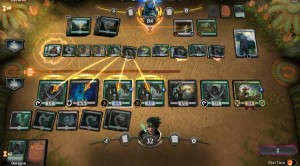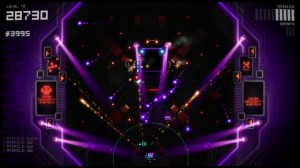Kingdom Hearts has got to be one of the most bizarre video game series ever conceived; an opinion that, at the risk of invoking of the wrath of billions of fangirls across the world, I state with much video game experience from the 80s and 90s. If you had asked me as a kid if Square (now Square Enix) would ever get together with Disney to create an action role-playing game that merged Final Fantasy-esque gameplay with Disney styled themes and settings, all spearheaded by a new and original story and character set, I would have looked at you with narrowed eyes and asked “What the f*** have you been smoking?”
Okay, maybe I wouldn’t have put it that way, but I still would have questioned your potential marijuana intake, as well as put down any belief in such a video game concept. And yet, here I am, writing this review on the latest installment of the aforementioned series, which is now widely considered to have supplanted Final Fantasy as Square Enix’s flagship franchise. Go figure.

The story and background are as follows: some time after the events of Kingdom Hearts II, King Mickey and the wizard Yen Sid had both concluded that, with the death of the Heartless Ansem and the Nobody Xemnas, it would not be long before the dark Keyblade Master Xehanort was resurrected. Master Xehanort, who was responsible for several cataclysmic events ten years before, represented a dire threat as he wished to reinitiate the Keyblade War, an event so devastating that it literally tore apart the original Kingdom Hearts universe and reshaped it into what it is today, all for his desire to seek out Kingdom Hearts. As such, both Mickey and Yen Sid agree it is time to ordain a new generation of Keyblade Masters, with the first selected candidates being Sora and Riku. Already accomplished warriors from their fights with the Heartless and Organization XIII, Yen Sid puts the two through the Mark of Mastery exam: the duo must journey to seven worlds previously destroyed by the Heartless, which have since been restored but left in a “deep sleep”, in order to battle the monstrous Dream Eaters and unlock the worlds’ keyholes to reawaken them. All throughout, both Sora and Riku must come face to face with their pasts and respective adversaries, alongside a mysterious silver haired youth in a Dark Coat (the uniform of Organization XIII) who somehow knows far more than one would believe. All this, while the resurrection of Master Xehanort continues to loom over the horizon…
While not exactly the Kingdom Hearts III we’ve all been waiting on, Dream Drop Distance is nonetheless an entertaining game that falls in with its predecessors quite well. The game mechanics are generally the same: Sora and Riku can move around and utilize their keyblades to attack on the basic level, while their exposure to fights will augment their stats as well as gain them access to special moves and abilities, ranging from Sora’s Superglide ability to Riku’s trademark Dark Aura attack. However, there are certain changes.

First of note is that unlike Birth By Sleep, you don’t play as Sora and Riku exclusively. Rather, you actively switch between them as the game goes on. The in-game explanation for this is both keyblade wielders are journeying into the Realm of Sleep, and as such they can only stay awake for a certain period of time before one falls to slumber, the other one awakens and goes through his exclusive storyline (Sora and Riku’s stories are parallel instead of interacting), then repeats the process. This is displayed by a “Drop” meter at the bottom of the HUD (next to the character’s health bar), which slowly decreases as time goes on, causing the character to fall “asleep” when it runs out, but not before enacting a thirty second “bonus” time in which players can gain additional item drops from defeated enemies. As well, the player himself has the option of “dropping” a character to sleep and switching to the other by pressing pause and tapping the “Drop” option, while items can be used to either replenish the “Drop” meter or slow its countdown. It’s a little annoying at first, but you get the hang of it after the first level or so.
Next up is the Dream Eaters. Unlike the Heartless, Nobodies and Unversed of the previous games, Dream Eaters aren’t just enemies that you fight off and on (these Dream Eaters are called Nightmares), but can also be teammates on your side (whereas these are called Spirits). This pretty much replaces Donald and Goofy and your other allies/summons in the previous games.

The system for gaining Dream Eater is a lot like the Pokemon series, only instead of “catching” Dream Eaters, you create them. Sometimes when you defeat a Nightmare in battle, it will drop a crystal-like object along with basic HP and munny; this is one of the materials that can be used in creating a Spirit. Each material comes in a specific size (Figment being small, Fancy being medium and Fantasy being large) as well as in a specific element (ranging from Grim to Savage to Wondrous and many others), with some being rarer than others. When enough materials are gathered together, it is possible to create a Spirit. However, unlike traditional “create-a-monster” styled games, there can be multiple ways and recipes toward creating a Spirit; this affects the quality of the Spirit in turn, as using a specific recipe can result in a higher grade and/or higher level spirit than others and vice versa. In turn, one can also modify a Spirit’s basic powers by adding in an item from Sora/Riku; for example, adding the special Fire Windmill in a Spirit’s creation will result in that Spirit holding greater defense against fire, while giving out a Potion may affect the Spirit’s HP level. Obviously, there are many ways to go about creating Spirits.

Meanwhile, the levels are what one would expect of a Kingdom Hearts title, i.e. they’re all based on Disney films as well as previous Kingdom Heart locations. Veteran fans will get a kick out of Traverse Town and The World That Never Was making gallant returns, while levels based on The Hunchback of Notre Dame, Tron Legacy, Pinnochio (which was originally meant to be a setting in the preceding Birth By Sleep but was dropped), the Mickey Mouse rendition of The Three Musketeers and (my personal favorite) Fantasia can all be found within the game. And as one would expect, each level is played out as a reenactment of the movies/cartoons they are based on, with La Citie des Cloches (City of the Bells, aka Paris) playing out with Quasimodo, Esmerelda, Phoebus, Frollo and the three gargoyles Victor, Hugo and Lavern, while The Grid details the adventure of Kevin and Sam Flynn, Quorra, Clu and Rinzler (Tron). The only disappointment I had with these reenactments was not having the Boss theme of La Citie des Cloches be based on the song Hellfire (arguably the best Disney villain song ever), but we can’t have everything. In short, just like the previous games, players who grew up on Disney movies (like I have) will find these levels and settings quite refreshing, even with the inclusions of Sora and Riku.
And finally there’s the soundtrack. Yoko Shinomura returns alongside Takeharu Ishimoto, Tsuyoshi Sekito and Kaoru Wada to produce an epic OST that is only befitting of a Kingdom Hearts title, utilizing traditional symphonic melodies as well as techno (the latter namely for The Grid) to emphasize each level and cut scene to its best potential. And as a bonus, Symphony of Sorcery (the level based on Fantasia) includes four familiar classics, as used in the movie: Ludwig van Beethoven’s “Symphony No. 6 ‘Pastoral’ Op. 6”, Pyotr Ilyich Tchaikovsky’s “The Nutcracker Suite Op. 71”, Paul Dukas’ “L’Apprenti Sorcier” and Modest Mussorgsky’s “A Night on Bald Mountain”. As a diehard fan of classical music, the latter four especially had an effect on me, such that I played Symphony of Sorcery over and over just to listen to “Pastoral” and “The Nutcracker Suite” as BGMs (“L’Apprenti Sorcier” and “Bald Mountain” were boss themes). If nothing else, I recommend getting the OST at least.

Overall, while (again) Dream Drop Distance is not quite the epic follow on to Kingdom Hearts II that we were waiting on in either story or gameplay, it is certainly a worthy addition to the franchise as well as the perfect precursor to any future Kingdom Hearts III. Rest assured one will be drawn into this game just like its predecessors, while the ending will only make you yearn for more, if not outright anticipate the next addition.





